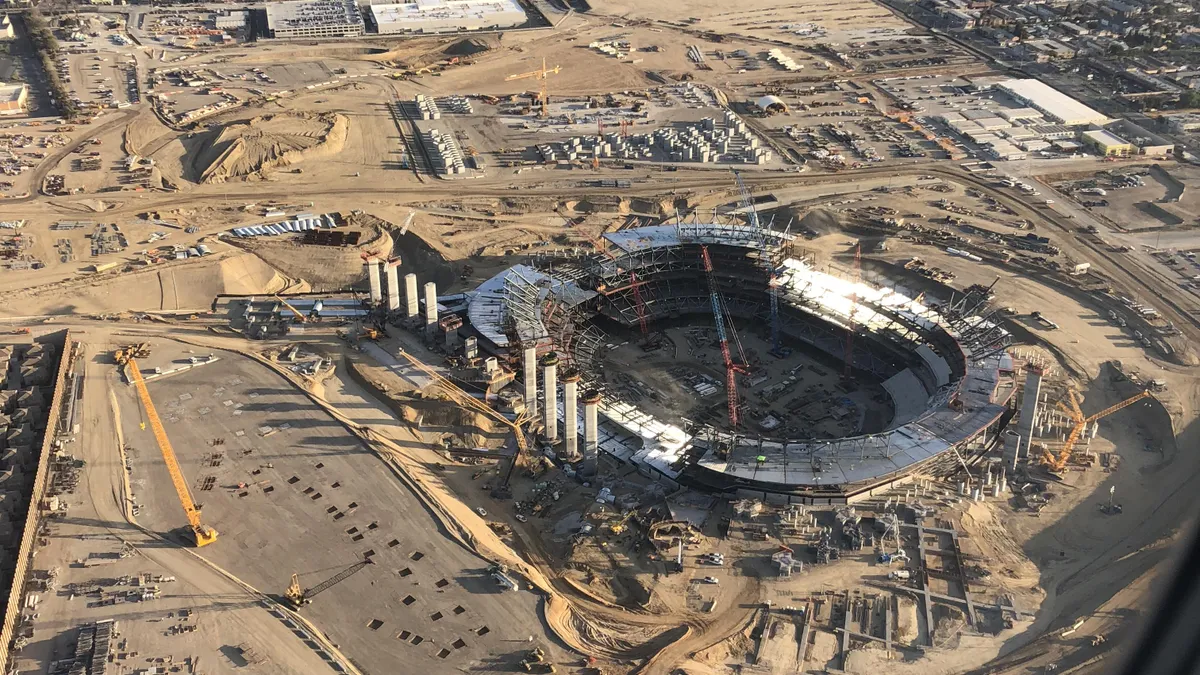Dive Brief:
- The price tag for the new Los Angeles Rams stadium under construction in Los Angeles has reached $4.25 billion, according to L.A. Biz. The figure includes the cost of a 6,000-seat amphitheater next to the stadium, but a planned buildout of retail and commercial development is likely to push the project past the $5 billion mark.
- Rising costs are due to the already-pricey Los Angeles development market, seismic-resilient design for the stadium and an $850 million laundry list of associated infrastructure items like access roads and utilities. The new estimate is two-and-a-half times the cost of the most expensive U.S. stadium built to date, the $1.7 billion MetLife Stadium in New Jersey.
- The updated price tag of the venue was revealed as part of a stadium bank financing package worth $2.25 billion. In addition to the new loan, Rams owners Stan and Ann Kroenke will contribute $1.6 billion toward construction – an amount more than the last NFL team sale of the Buffalo Bills for $1.4 billion – and the NFL has agreed to lend the team $400 million. Stan Kroenke has personally agreed to cover cost overruns and repay the $2 billion-plus loan if the project opens late. The Los Angeles Chargers, who will share the stadium with the Rams, will also be responsible for some of the overall debt.
Dive Insight:
The stadium has been under construction since late 2016, and the team and general contractor, a joint venture between Turner Construction and AECOM Hunt, have overcome a few obstacles in order to maintain progress.
The Federal Aviation Administration (FAA) created uncertainty – and delays – around the project during its safety review of the design. The agency was concerned that the stadium could be too tall and that its height would interfere with airplane traffic in and out of nearby Los Angeles International Airport. The FAA's final decision brought both good news and bad news for the team, however. The FAA approved the design but decided that the Rams must pay $29 million for additional air control and radar equipment to help airplanes steer clear of the stadium.
Soon after the FAA finished its review and announced its decision, the team was again delayed by record rainfall, which left 15 feet of standing water around the job site. This hampered progress on critical project tasks, causing the team to push back the stadium opening to as late as the 2021 season.












